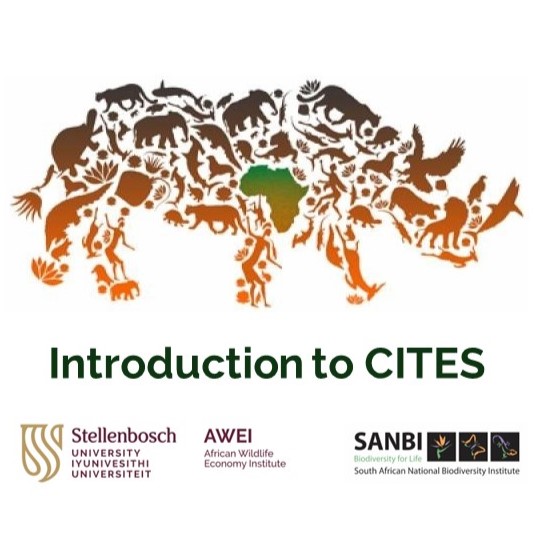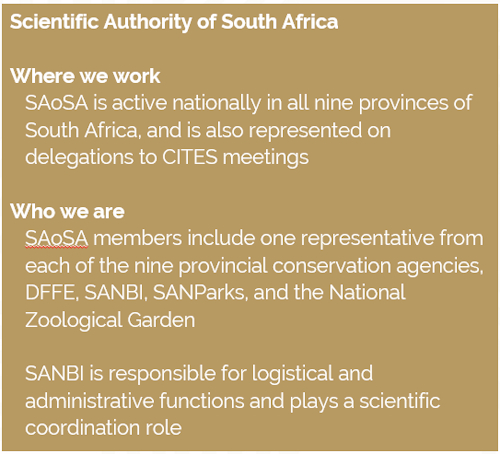CITES Module 10
 10 Discussion on the role of the Scientific Authority
10 Discussion on the role of the Scientific Authority
In this module you will discussion the current roles, responsibilities, and operational modalities of South Africa's Scientific Authority.
Lecture
- Click on the image below to stream the lecture on OneDrive (6 min)
- You can also download the lecture for listening offline
- Take notes while listening
Key learning outcomes from modules 8 & 9
- A clearer understanding of the technicalities of undertaking an NDF study
- An insight into how NDFs and other CITES-related trade measures are undertaken in South Africa.
You may want to return to the two modules on CITES to further study the learning resources and reflect on the questions provided.
Key question for discussion
- Find opportunities to discuss what you have been studying with your peers and professional colleagues. Set aside some time for meeting up face-to-face or online.
- Q: What processes and procedures could enhance the capacity of the Scientific Authority to fulfil its role with respect to ensuring that trade of CITES-listed species is sustainable?
 More questions for discussion
More questions for discussion
- Q: What are the key elements and methodologies involved in conducting a need assessment for and NDF, and how does it contribute to identifying priorities, challenges, and opportunities?
- Q: What are the essential data requirements and sources necessary for conducting a comprehensive NDF study, and how do these data inform the assessment of the potential impacts of international trade?
- Q: What are the foundational principles and guidelines that inform the design and implementation of an NDF study, and how do these principles ensure the integrity, objectivity, and effectiveness of the assessment process?
- Q: What are the critical components outlined in the CITES-IUCN Checklist for conducting NDF studies, and how does adherence to these guidelines ensure robust assessments?
- Q: How does the structured methodology of the 9-step approach ensure a comprehensive and scientifically rigorous assessment of the sustainability of trade in wildlife species?
- Q: What are the key functions and responsibilities of the CITES Management Authority in South Africa , and how does it ensure the conservation of wildlife while facilitating legal trade?
- Q: What is the mandate and function of the Scientific Authority in South Africa within the framework of CITES, and how does it contribute to the application of CITES measures by providing scientific expertise and advice?
- Q: What supplementary roles does the Scientific Authority in South Africa undertake under the National Environmental Management: Biodiversity Act (NEMBA), alongside its responsibilities under CITES?
- Q: What is the process involved in South Africa for obtaining export Non-Detriment Findings (NDFs) under the framework of CITES, and how does this process ensure that international trade in wildlife is conducted sustainably?
- Q: What are the key steps and considerations involved in the CITES export permit process in South Africa, and how does this process ensure compliance with CITES regulations while facilitating the legal and sustainable international trade of listed species?
Let's revisitGo back to Module 9Go back to the introduction |
 Or let's celebrate...
Or let's celebrate...
You've completed the course. Congratulations!
This is version 1 of the induction course. Comments and suggestions are most welcome. Please contact us at awei@sun.ac.za.
Get updates by email
Through impactful research, stakeholder engagement, and professional development, AWEI is supporting the wildlife economy across Africa. Please subscribe for occasional updates on our work and forthcoming events.
Sign up for a quarterly dose of AWEI insights
In a complex and changing world, AWEI generates strategic ideas, conducts independent analysis on wildlife economies, and collaborates with global scholar-practitioners to provide training and expertise for biodiversity conservation, climate resilience, and inclusive economic opportunities in Africa.
